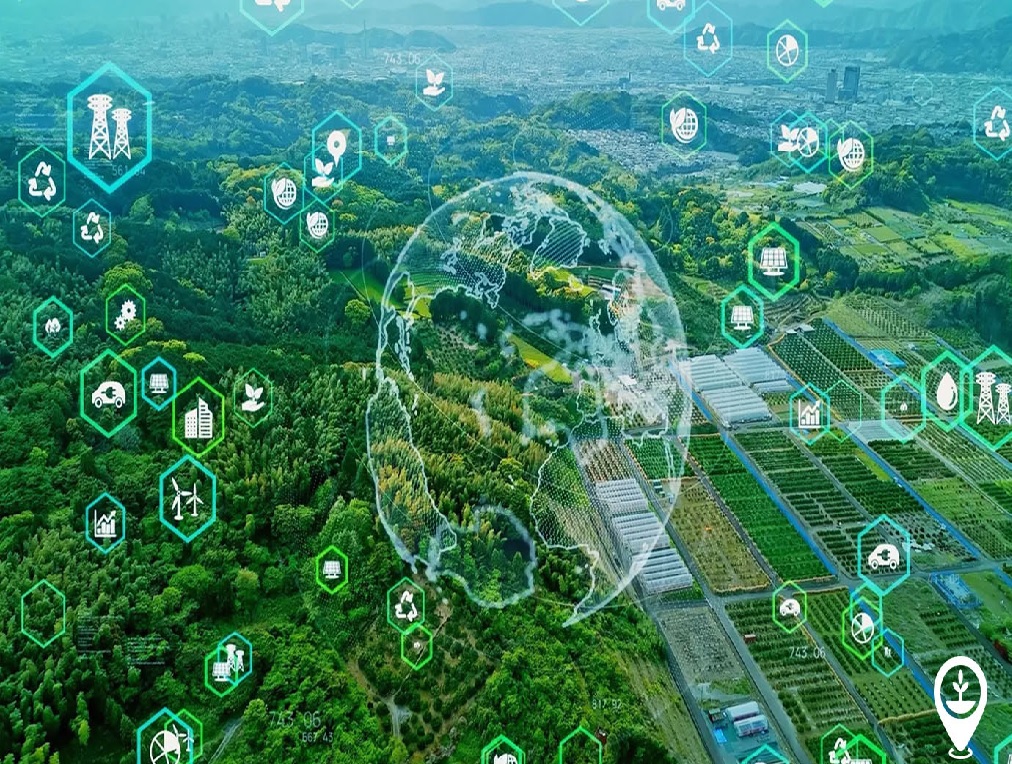The biggest problem nowadays is climate change. Role of Big Data in Predicting Climate Change became more important now because global temperature is rising as extreme weather events are happening. So a reliable person who can predict climate change is highly required. With the help of Big Data researchers can analyze large amounts from different sources like satellites, sensors, and weather stations and can create a model so that researchers can understand and predict climate change. With the help of AI, Machine learning, and cloud computing a large amount of data can be managed and analyzed very smoothly.
Data can be collected from various sources. Let’s first understand the different data sources from where you can collect the datasets.
4 Different data sources from where you can collect the datasets
1. Satellite Data
You can collect satellite data with the help of different space agencies like NASA, ESA, and ISRO. You can find the important dataset and crucial information about the environmental factors containing atmospheric conditions, sea level, and ice cap melting. With this information, you can create a climate model to analyze.
2. Weather Stations
These stations analyse temperature, humidity, wind speed, and precipitation trends. If you collect data from previous years and analyze then you can find information that help to understand long-term climate trends and change.
3. Oceanographic Sensors
From Oceanographic data, you can get information regarding the sea level, sea surface temperatures, salinity, and ocean currents. This information is important to understand climate change.
4. Social and Economic Data
- Public datasets, surveys, and social media platforms provide insights into human activities that affect climate change.
- This data includes information on energy consumption, transportation patterns, and agricultural practices.
- Identifying how human behavior is involved in climate change, and ensuring preventive measures by analyzing social and economic data.
- Social media data also plays a role in detecting public awareness and perception of climate change issues, informing policy and communication strategies.
Predictive Analytics for Climate Change
Predictive analytics uses different techniques to find patterns in climate change. Based on these patterns, analytics can predict future trends and you will get to know that various factors help to make accurate climate forecasts. Machine learning is the technique used for predictive climate patterns. A neural network is a technique capable of processing complex and large datasets and identifying patterns in temperature and rainfall. The regression model is another important technique used to analyze historical data and to predict temperature changes. It checks the previous data, and checks on all the factors that can affect the climate. The regression model guesses about the temperature trends in the future. Random forest algorithms are also used for climate analysis. It works on different climate variables, such as how they are interconnected, and provides a comprehensive report on climate change. With the help of all these techniques, predictive analytics provide valuable insights about climate change. With the predictions, you can prepare for climate change and can take predictive measures.
Climate Change Prediction Models
Global Climate Models (GCMs) are used by an intergovernmental panel on climate change, and provide predictions on climate change for a long-term basis. Regional Climate Models (RCMs) provide forecast information on specific regions, focusing on smaller areas. Earth System Models (ESMs) analyze ocean, atmospheric, and biological data for climate change. Hybrid AI-driven models with deep learning and statistical modeling provide more accurate forecasts of climate change.
Big Data role in weather forecast
Big data applications play a major role in predicting climate change. They collect a large amount of environmental data from different sources, such as satellites, sensors, and weather stations, and apply advanced analytics to provide predictions on climate change. Big data also helps safeguard the planet and reduce any loss caused by climate change by provisioning solutions.
Real -Time data processing Real-time data processing provides quick information on meteorologists’ analysis, and AI-driven simulations to provide precise short-term forecasts and make the process smooth to predict weather conditions. Remote sensing technologies, such as satellite imagery, play an important role in detecting weather change. IoT devices and mobile sensors provide real-time updates of different locations.
Improving disaster preparedness
These technologies help to prepare for any disaster. For example, hurricane, and cyclone predictions on storm path and intensities help for timely evacuation and preparations. Big data analyzes the rainfall and monitors the flood, predicts any potential flooding and helps communities to take preventive actions. Heatwave and wildfire predictions check on high-risk areas and take preventive measures. All these techniques are important for any disaster management by ensuring minimal damage.
Sustainable Solutions with Big Data
Big provides solutions also in different ways Big data helps to optimize renewable energy sources by forecasting the solar and wind energy availability by analyzing weather data. Smart grid technologies improve energy efficiency and reduce carbon footprints, and AI-powered tools monitor industrial and vehicular emissions. Big data supports green infrastructure planning to reduce heat islands as well as improve air quality. AI also provides solutions against traffic congestion.
Conclusion
Big Data is the revolution to predict and understand climate change. Predictive analysis, climate models, and data science applications help to forecast climate change and provide solutions against climate change. Technology is continuously advancing day by day and plays a crucial role in a safe and sustainable future. Console Flare is the institute that provides deeper knowledge of all these technologies. They provide industry-level training on data analysis, Machine learning, and other tools and technologies required for successful Data science professionals.
For more such content and regular updates, follow us on Facebook, Instagram, LinkedIn

